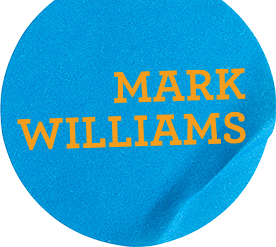In today’s professional landscape, more and more individuals are part of the growing gig economy. Working as freelancers in any number of industries, gig workers enjoy flexible work scheduling or the chance to choose the work they take on. (Think Uber or food delivery drivers, freelance graphic designers, virtual assistants and more.) However, there are also challenges, with a primary one being the challenge of retirement planning for self-employed gig workers.
Traditional employment settings oftentimes provide employer-sponsored plans for employees’ retirement savings strategies. One of the most common retirement savings plans, the 401K, is offered by many employers as a benefit for their workers to take advantage of. These plans give employees the opportunity to automatically contribute pre-tax dollars to a tax-advantaged account that will grow over time. Additionally, many employers offer a matching contribution, making any retirement savings contribution even more impactful.
Losing out on benefits like this is one of the trade-offs gig and freelance workers make when pursuing a nontraditional career. But that doesn’t mean you can’t save for retirement as a freelancer. Let’s look at 3 savings methods for freelancers’ and gig workers’ retirement plans.
Retirement Options for Self-Employed Workers
Traditional or Roth IRA
Both traditional IRAs and Roth IRAs are retirement savings accounts available for anyone to use, regardless of their employment situation. But for those who are self-employed, IRAs offer probably the easiest entry point for those looking into how to start a retirement fund.
IRAs have a relatively low annual contribution limit ($6,000 for those under 50, $7,000 for those over 50), so they don’t offer a pathway to build future wealth as quickly as other retirement planning strategies. Still, their accessibility should make them appealing, both Roth and traditional IRAs, for self-employed workers. Additionally, making IRA retirement contributions for self-employed workers won’t limit their ability to participate in other dedicated vehicles for retirement savings for freelancers (such as the Solo 401K).
With a traditional IRA, much like a traditional 401K, you can save pre-tax dollars in your account and let those funds grow, tax deferred, until your retirement. Because the contributions are pre-tax, your money can go a little farther with a traditional IRA. But keep in mind you’ll have to pay taxes on it when you eventually withdraw. And you may be in a higher tax bracket at that point than you are today.
With Roth IRAs, you contribute post-tax funds. Early in your career or when building a business, you may be in a lower tax bracket compared to later in your career or even in retirement. That means you’re taking advantage of paying lower taxes up front and then seeing your account grow tax-free, with no additional taxes to be paid on qualified distributions.
If you need to access some of your funds prior to your retirement, a Roth IRA allows you to take out your original contributions (but not your investment earnings) without paying a penalty. (I recommend avoiding early withdrawals wherever possible, though.)
Especially when you’re starting out as a freelancer, IRAs, particularly Roth IRAs, offer considerable benefits and should take a high position in any freelancer’s retirement plan.
Open a Solo 401(K) Plan
IRAs certainly present a great option for building a retirement fund for self-employed individuals. But freelancers may have looked at their peers’ ability to contribute to an employer-sponsored retirement plan and wondered, “Can I open a 401K on my own?”
Well yes, you can. It’s called a Solo 401K. For self-employed people this 401K plan gives you the potential to contribute more than a traditionally employed worker can. When you open a Solo 401K plan, you have the opportunity to contribute both as an employee and as the employer.
In your role as employee, you can contribute up to the annual contribution limit — $20,500 in 2022, if you’re under 50. Those over 50 can take advantage of catch-up contribution limits and fund their account with up to $27,000 per year.
Where this 401K for freelancers and self-employed workers really differentiates itself is in the ability to also make employer contributions. Because you are self-employed, you are both the employee and the employer. In your role as the employer, you can make additional contributions up to 25% of compensation or follow the steps provided by the IRS to calculate your contribution. The maximum annual contribution to a Solo 401K in 2022 is $61,000 (not counting catch-up contributions).
As with IRAs, there is also a Solo Roth 401K option available if you’re interested in higher post-tax retirement contributions.
SEP IRAs
Whether you run your own business full time as a sole proprietor or just receive compensation for freelance work on the side, you can set up a SEP IRA as part of your retirement planning strategy. This retirement savings vehicle allows you to contribute up to 25% of your net self-employment income, with an annual contribution limit in 2022 of $61,000.
They also can be combined with a traditional IRA or a Roth IRA, giving you more ability to save for your retirement. As with traditional IRAs, contributions to a SEP IRA are tax-deferred. That means you contribute pre-tax dollars to the account and don’t have to pay any taxes until you begin to take distributions. (There is no Roth version of a SEP IRA.)
Also, with SEP IRAs and unlike 401K and traditional/Roth IRA plans, there is no allowed catch-up contribution — the 25%/$61,000 annual limit is a hard limit.
A SEP IRA is simpler to open and maintain than a Solo 401K plan. It also has the added benefit of not requiring annual reporting to the IRS. (Solo 401Ks require filing annual reports with the IRS once they have $250,000 or more in year-end assets).
Something else to keep in mind is that if SEP IRAs require equal contributions. That means if you start your business as a sole proprietor and eventually hire employees, you have to provide the same level of contributions for them all. That means that if you contribute to your own SEP IRA the maximum amount of 25%, you must contribute that same amount (percentage-wise, not dollar amount) for each eligible employee.
Bonus Strategy: Annuities
I’ve written about it before, but another great option for a DIY self-employed pension-plan–style retirement account for self-employed workers is annuities. Annuities offer another strategy for a tax-deferred retirement plan for freelancers, with the benefit of regular, guaranteed payments once you annuitize the contract.
Gig Economy Workers and the Future of Retirement Planning
In the gig economy, retirement savings doesn’t have to be sacrificed for work flexibility. Self-employed retirement planning doesn’t have to be a struggle or an afterthought. Hopefully now you have a better understanding of how to plan for retirement when you are self-employed — after all, financial planning for freelancers is just as important as it is for traditional workers.
Regardless of which option (or options) you decide to use, remember that the best retirement plan for self-employed is the one you start early and contribute to regularly.

